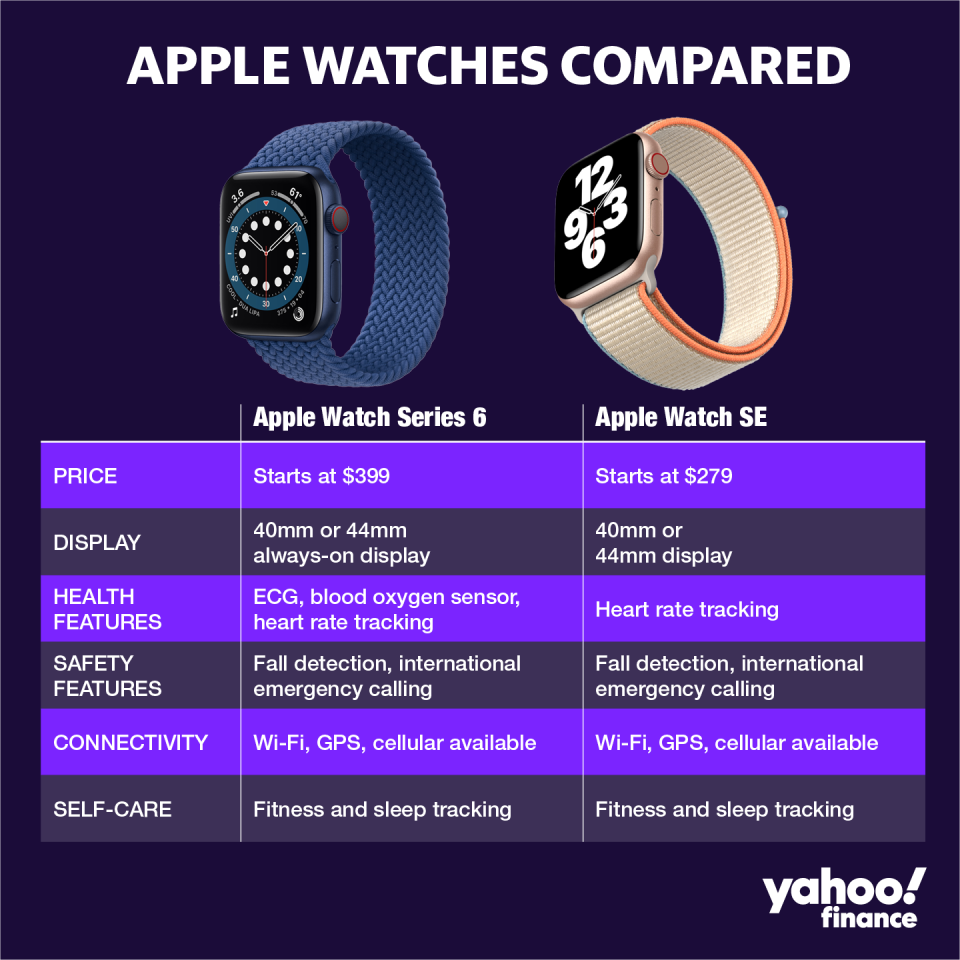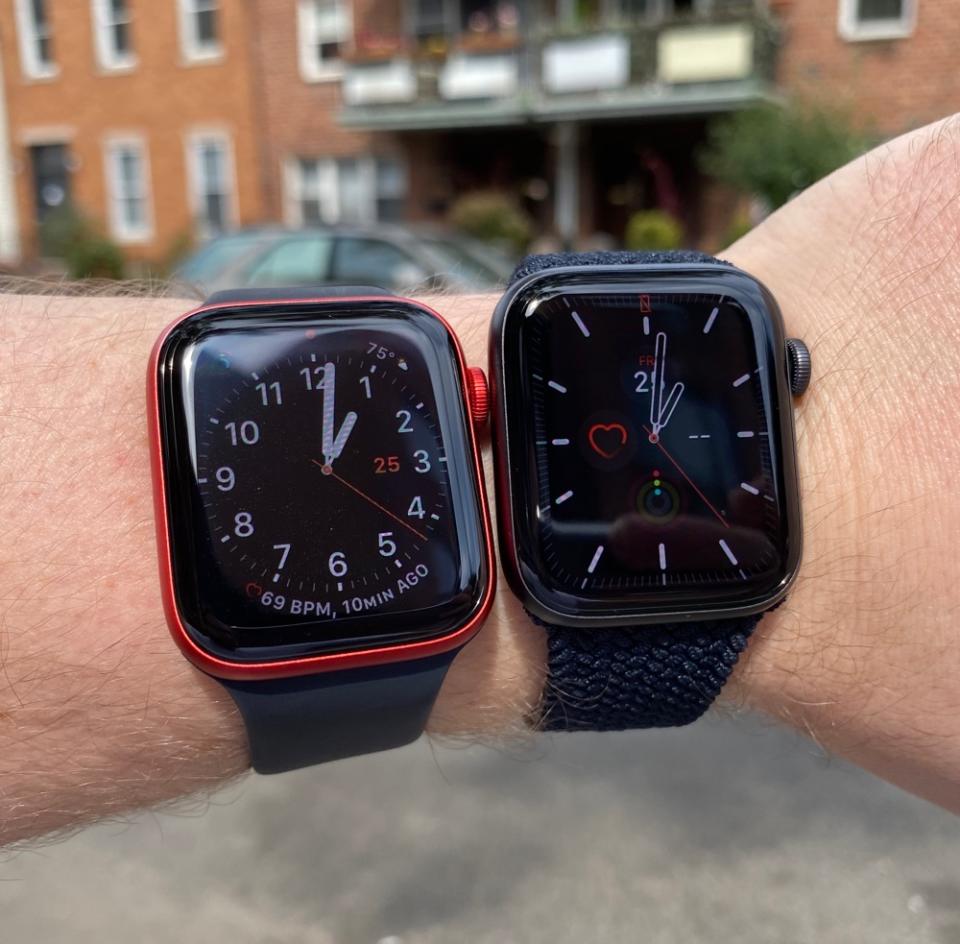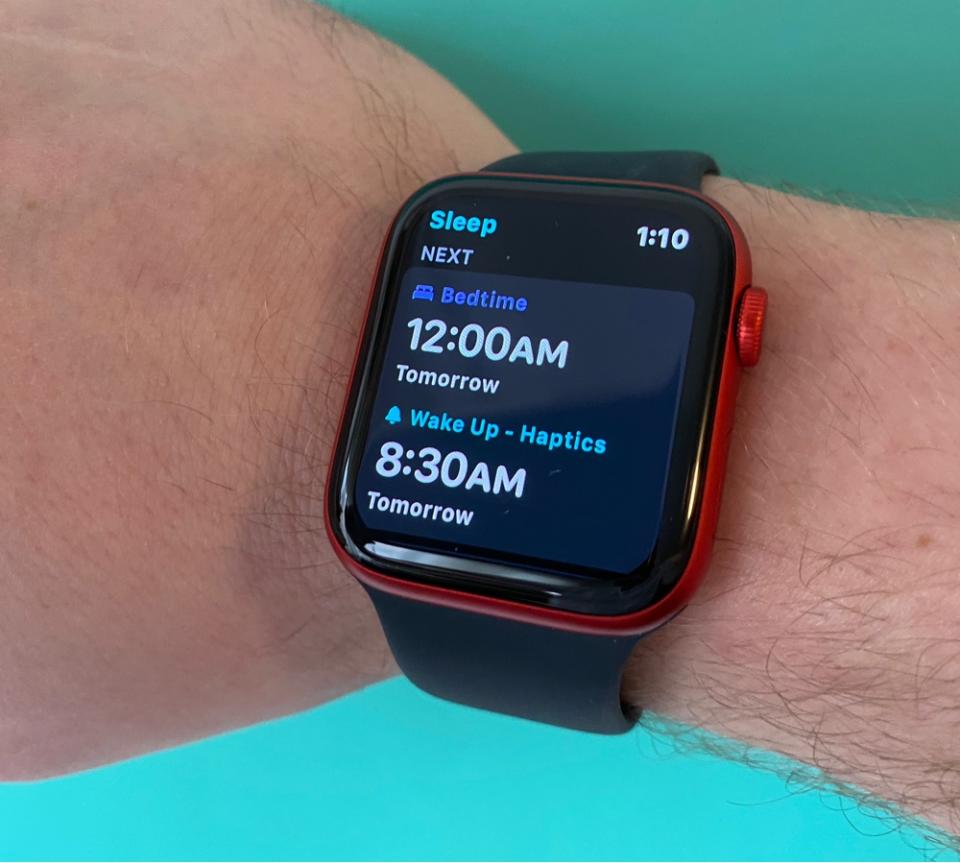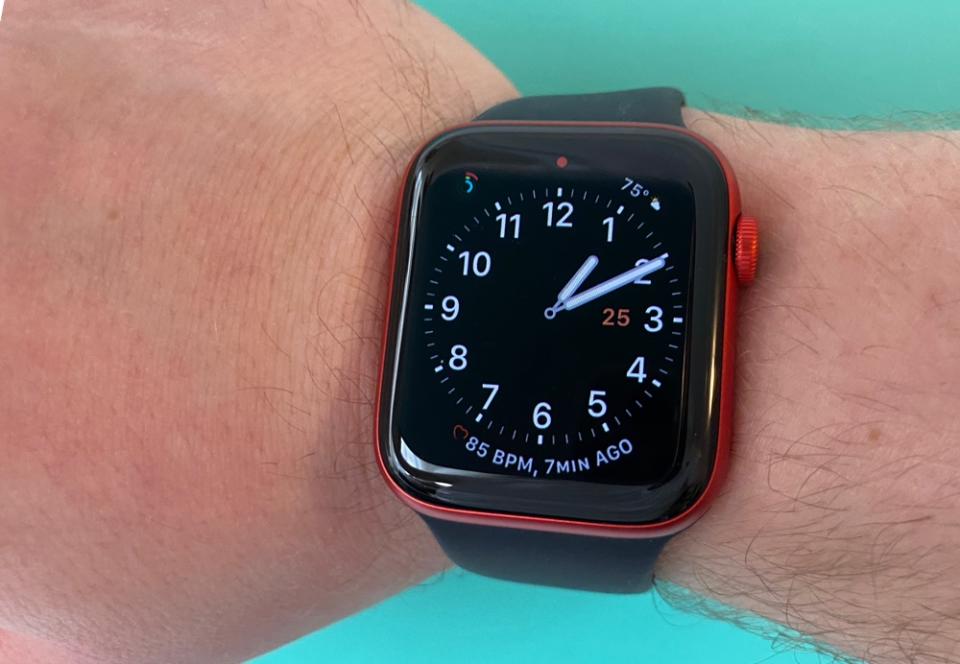Apple Watch reviews: The best features of the Series 6 and SE
The Apple Watch Series 6 and Apple Watch SE are here. Available starting at $399 and $279, respectively, Apple’s latest watches offer new displays, sleep tracking capabilities, and a blood oxygen sensor for the Series 6.
I’m already a big fan of Apple’s (AAPL) watches: I’ve been wearing the Series 5 for the past year, and wore the Series 4 before that. And the Series 6 and SE are just as addictive.
To give you an idea of how the Apple Watch Series 6 and Apple Watch SE match up, I’ve broken down my favorite features of the watches including their improved displays, along with how they compare to their predecessors, and what parts need improvement, such as their overall battery life.

The Series 6 and SE use the same size displays
Unlike the Apple Watch Series 5 and Apple Watch Series 3, which came in two different size displays—40mm and 44mm for the Series 5 and 38mm and 42mm for the Series 3—the Series 6 and SE both come with 40mm and 44mm screens.
That’s a welcome improvement, since users get the same viewing area out of the SE as they would with the pricier Series 6 without having to pony up for the bigger display.
The Apple Watch Series 6’s display features a new brighter always-on display designed to provide better viewing outdoors in direct sunlight compared to the Series 5. It’s important to note that the increased brightness only applies to the always-on function, and not the display as a whole.
The Apple Watch SE, meanwhile, doesn’t get the always-on feature, which is a bummer, but not a deal breaker. I do enjoy being able to simply glance down at the Series 6 to check the time and my complications without having to tap it or raise my wrist, but it’s certainly something I can live without.

Sleep tracking puts the Apple Watch on a par with other fitness trackers
With watchOS 7 — the operating system that powers every Apple Watch from the Series 3 onward — Apple has finally brought built-in sleep-tracking to its watch lineup.
To track your sleep, you’ll need to set up your sleep schedule in the Apple Health app. Choose the times you want to go to sleep and wake up, and the Apple Watch will automatically track your sleep by measuring micromovements via the watch’s accelerometer. It’ll even provide you with wind-down reminders ahead of your bedtime so you can get ready to hit the sack.

It’s a helpful feature, and works well. Sleep charts show you how long you spend in bed and how much time you’re actually asleep. And since I tend to lie in bed for a while, scrolling through social media and the like, my watch, naturally, shows that I spend less time sleeping than lying there staring into the abyss.
Of course, standard fitness tracking, including Apple’s all-too-addictive fitness rings, which gamifies completing your exercise goals, is a part of the Series 6 and SE. And with watchOS 7, Apple has added a host of new workout tracking options including dancing, functional strength training, and core workouts.
Blood oxygen tracking gives a better understanding of your health
One of the key hardware upgrades for the Apple Watch Series 6 is the inclusion of a blood oxygen sensor, which looks at how much oxygen your blood cells carry through your body.
You can use the feature on demand via the Blood Oxygen app on the Series 6, as well as allow it to run in the background, capturing information about your blood oxygen level while you sleep or go about your day.
Blood oxygen levels can be especially useful to know when dealing with issues such as asthma and COVID-19.

But the watch’s blood oxygen sensor, unlike the ECG, which debuted on the Apple Watch Series 5 and is back for the 6 providing measurements of your heart rhythm, isn’t meant to be used as a medical device. Instead, Apple says its readings are for general wellness.
I’m not entirely sure what to make of the blood oxygen reading, myself. I can see it being useful for studying long-term trends to see if my levels have declined and then consult a doctor, but as an immediate measurement, it’s not going to tell an average, healthy person much.
If you’re not interested in the blood oxygen sensor, the SE, which doesn’t include it, is likely the option for you. But that means you’ll also miss out on the Series 6’s ECG sensor.
Performance and battery
The Apple Watch Series 6 comes with Apple’s new S6 processor, while the SE uses the S5 chip found in last year’s Apple Watch Series 5. Apple says the Series 6 is 20% faster than the SE, but I haven’t noticed much of a difference between the two when opening apps or measuring workouts.
The Series 6 does, however, outperform the SE in terms of charging thanks to its fast charging functionality. I was able to fully charge the watch in just an hour and a half, which is especially helpful if you use the sleep tracking feature and can’t charge your watch at night.

Instead, I drop the Series 6 on its charger while showering in the morning, or just before bed to give it a quick top off — and it runs without issue. After charging it and wearing it throughout the night, I still had 72% battery life left nearly 14 hours later.
I was hoping Apple would actually increase the Apple Watch’s overall battery capacity, so I could wear it longer without having to take it off to charge, but fast charging is still a welcome addition.
Which one should you get?
Between the two watches, I’d opt for the Series 6 only if you want the always-on display and feel the need to use its blood oxygen sensor. It’s also generally better to get the device with the better processor, as it will last you longer than a device with a year-old chip.
I’m that kind of person, so I’ve already put my order in for a Series 6.
If you’re not sold on the need for the always-on display, don’t care for the blood oxygen sensor, and don’t mind the S5 chip, then the Apple Watch SE is definitely the one to go with. Its performance is solid, and it offers the vast majority of the same functionality as the 6.
And don’t forget, if you want to save some cash, the Apple Watch Series 3 is still out there for $199. It doesn’t have nearly as many features as the Series 6 or SE including fall detection, ECG, international emergency calling, or those bigger displays, but it’s still a reliable fitness tracker and timepiece.
If the Apple Watch isn’t for you, you may want to check out Samsung’s Galaxy Watch 3, which offers many of the same features of Apple’s timepiece, but works with Android powered smartphones. But if you’re an iPhone user, there’s more than likely an Apple Watch out there for you.
Got a tip? Email Daniel Howley at [email protected] over via encrypted mail at [email protected], and follow him on Twitter at @DanielHowley.
More from Dan:
Microsoft’s Xbox boss: video games undergoing ‘the same’ transformation TV and music did
The Nikola scandal proves even GM will do anything to catch Tesla
Microsoft’s Bethesda deal is a $7.5 billion part of its plan to crush Sony
Follow Yahoo Finance on Twitter, Facebook, Instagram, Flipboard, SmartNews, LinkedIn, YouTube, and reddit.

